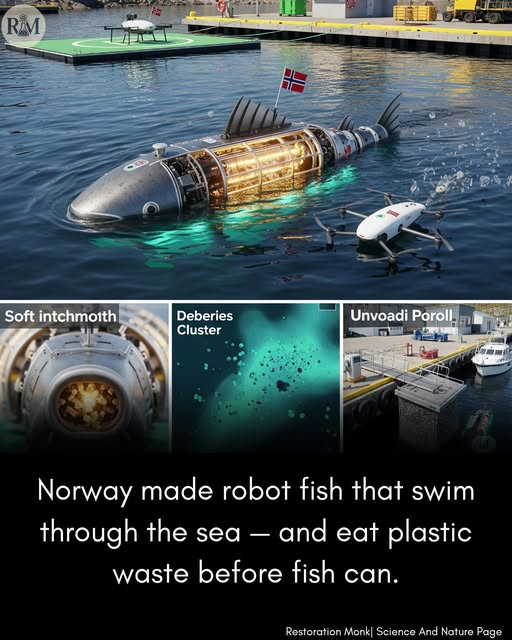
In Oslo, Norwegian marine engineers have released a fleet of biomimetic robotic fish that autonomously swim through polluted harbors, detecting and swallowing floating plastic without disturbing wildlife.
The robots, nicknamed “Cleanfins”, are about the size of a tuna and equipped with infrared cameras, sonar, and chemical sensors that identify microplastic clusters, wrappers, and bottle debris. Once detected, a soft internal vacuum gently pulls the plastic into a biodegradable holding chamber.
Powered by solar-charged batteries, they can operate for up to 48 hours per swim, filtering thousands of particles before returning to a floating dock for unloading and diagnostics. Their tail-fin propulsion mimics real fish, reducing noise pollution.
Field trials in Bergen and Oslofjord removed over 3,000 kilograms of plastic debris in just one month. AI swarms let them communicate and divide search zones to maximize coverage.
Norway is now producing them for use in coastal resorts, industrial ports, and fishery zones — a scalable solution for autonomous microplastic removal.
